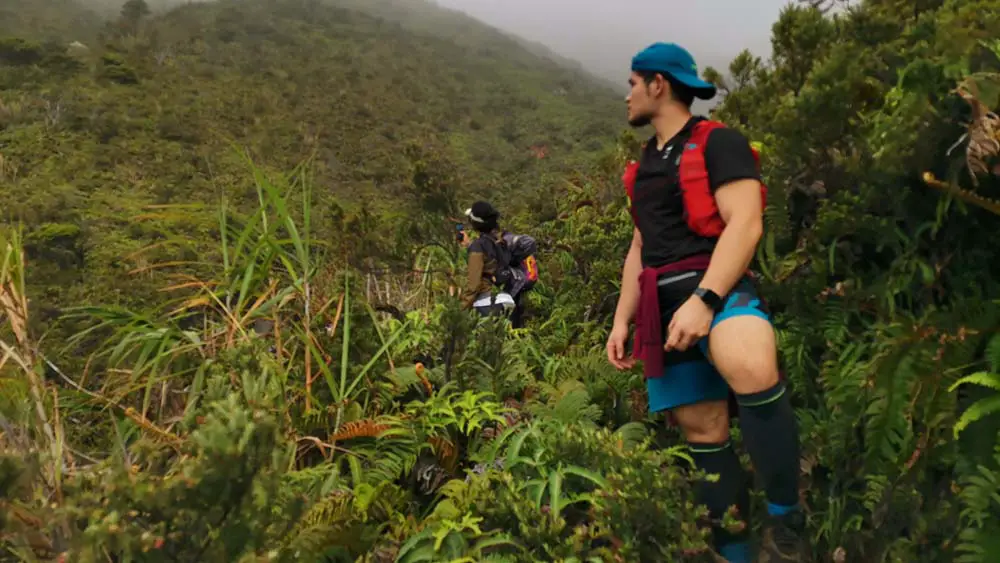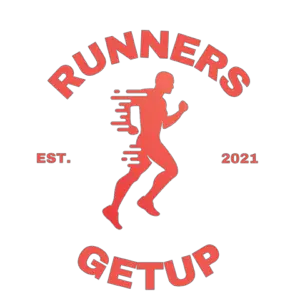This post contains affiliate links.
I’ve read a lot of articles claiming that trail running helps you build muscle. However, as I observed the physiques of my fellow trail runners, I’ve seen a lot of differences. As a former strength athlete and now a trail runner, I’m in the position to know if trail running does help build muscle.
In general, trail running, especially on trails with high elevation, helps build muscles in the legs, calves, and glutes but only up to a point. It does not make your muscle mass big the way strength and hypertrophy training does.
Ahead, we’ll talk about what trail running does to your body in terms of building muscles. We’ll also look at what is needed to build muscles that trail running does not provide. So if you want to learn more about trail running and building muscles, read on.
Trail Running Builds Muscle… But Only Up To a Point

Trail running is a great way to build muscles, particularly in the calves, glutes, and legs.
When you first try trail running, this is a new stimulus for your body that is enough to stimulate muscle growth.
Since most trails have varying degrees of inclination, your muscles will benefit from the new type of intensity and the overload principle.
Compared with running on flat ground, trail running places more emphasis on muscle strength and endurance.
That’s because you’ll have to use your muscles to maintain balance and propel yourself forward while negotiating uneven terrains and inclination.
Given this increased demand on your muscles, it’s no surprise that trail running can help you build muscle. However, this effect is limited.
Once your body adapts to the intensity of trail running, it will stop growing until you challenge it with a new stimulus.
What You Need For Muscle Growth That Trail Running Can’t Provide
Aside from a lot of calories, protein, and adequate rest, there are three training needs for muscle growth that trail running simply can’t provide:
- Overload – challenging your muscles by gradually increasing the load
- Time under tension – the amount of time your muscles are placed under tension on an exercise set
- Intensity – the weight of the object you’re lifting (or the subjective measure of exercise difficulty)
- Specificity – the exercise has to be specific to the imposed demands
If you notice people who strength train, you’ll find that they have bigger muscles than the average trail runner.
That’s because strength training possesses these three exercise qualities that trail running never can.
First, it’s very difficult to overload your muscles without using added weights.
And since trail running is simply running on a beaten path, there’s no way to actually increase the load.
How about the time under tension? Sure, trail running takes a long time, but your muscles are not necessarily under tension when you run.
It’s an alternate activation of different muscle groups rather than a single effort of a specific muscle group to lift a load.
So the time under tension for trail running is a few milliseconds per gait cycle.
The intensity varies. Yes, you can increase the intensity by running faster or tackling a trail with a higher elevation, but without overload and time under tension, intensity itself won’t make your muscles bigger.
Lastly, specific. In order to build muscle, you need to create a stimulus that induces muscle growth.
Something that’ll tell the muscle “you need to get bigger so you can lift this weight”.
Trail running doesn’t do that. It tells the muscle “you need to be efficient so you can run longer on trails”.
Should Trail Runners Lift Weights?
Trail runners may benefit from lifting weights in the following ways:
- It increases overall strength which helps you run faster
- It increases muscle endurance
- It helps prevent running injuries
- It improves your balance
A study conducted by the International Journal in Sports Medicine revealed an 8% increase in running economy for following a heavy-weight strength training program.
And although the running was done on the treadmill in the study mentioned above, we can assume that the effects will translate into trail running.
So, should trail runners lift weights? Absolutely! Lifting weights will only make you a better, stronger, and more efficient runner. There are no negative effects associated with strength training for trail runners.
Related post: Does Gaining Muscle Make You Run Slower?
What Type of Running Builds The Most Muscle?
If you want to build muscle through running, there is a way.
Short-duration, high-intensity exercises are scientifically proven to induce muscle growth in untrained individuals.
A 2017 study found an increase in the cross-sectional area of the vastus lateralis muscle (lateral part of the quadriceps) of untrained college students following a high-intensity running protocol.
In the study, 12 participants were asked to run four sets of 4 minutes at 90-95% HR max followed by a 3-min active rest for 10 weeks.
The researchers found an 11% increase in the cross-sectional area of the vastus lateralis muscle compared to the control group.
This study suggests that high intensity running, such as sprints, HIIT, and short high inclination runs may induce muscle growth.
But take note, the study was done on untrained individuals. A decrease in the rate of muscle growth may occur once your body adapts to the demands of high-intensity running.
My Personal Experience With Trail Running and Building Muscle
Before I started running, I was a Crossfit athlete and you can say I’m quite muscular.
However, I’ve always had small calves despite the constant heavy weight exercises I do. That’s because most of my workouts aren’t targeted to my calves. Even our runs are mostly done on flat pavement.
When I started trail running on hilly terrains, I noticed that my legs became more chunky.
A similar thing happened to my friend who started trail running with me. He noticed a growth on his lower leg that he never had before he started trail running.
But once our bodies adapted, the calves stopped growing.
I also observed that most of the trail runners in our area are skinny with toned legs. There are some outliers—those who regularly does strength exercises as well (myself included).
Related post: Running After Leg Day (Pros, Cons and What Type of Run)
Muscle Building Tips for Trail Runners
If you’re a trail runner who wants to build muscle, here are some tips:
- Do high-intensity running – High-intensity runs like sprints, HIIT, and hilly sprints are excellent ways to increase the intensity of your runs. Studies have shown that HIIT can help you build muscle
- Add inclines – running on hilly trails or adding inclines to your regular trail runs can help you get more out of your workouts and build muscle faster
- Add strength training to your program – lift heavy compound exercises at least three times a week
- Don’t forget your upper body – trail running is leg-specific, so make sure you add strength exercises for your upper body in your strength program
- Eat a high-calorie, high-protein diet – if you want to build muscle, you have to have a calorie surplus of at least 500 calories per day.
Related post: Should I Run or Lift First? (Based on Experience)
Final Thoughts
Whether you’re a trail runner or not, it’s important to build muscle for running.
Building muscle can help improve your performance, prevent injuries, and make you stronger.
If you want to build muscle as a trail runner, try incorporating high-intensity interval training (HIIT), hill runs, and strength training into your workouts.
In addition to your regular training, you should also make sure to eat a high-calorie, high-protein diet and get enough rest and recovery.
With these tips in mind, you can build muscle and become a stronger, faster, and more efficient trail runner.
